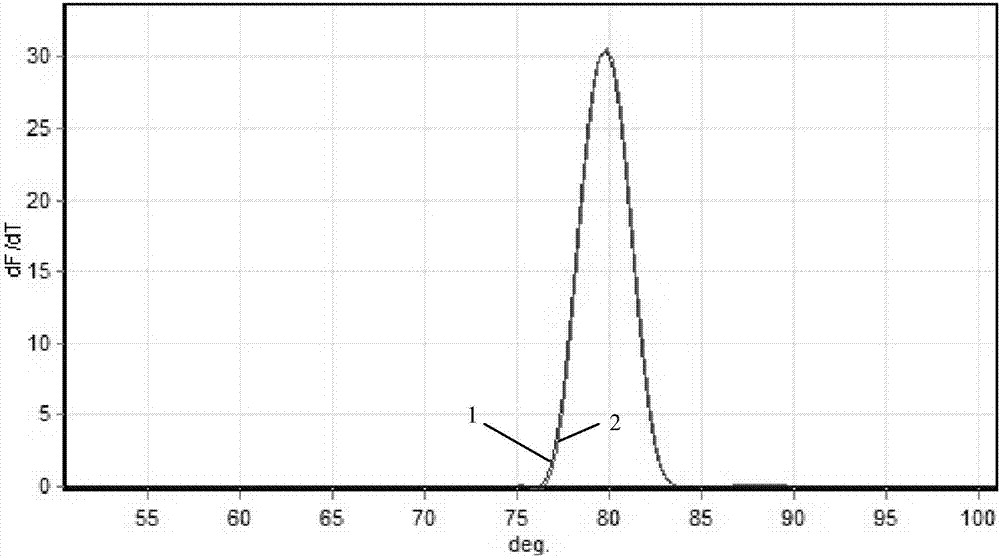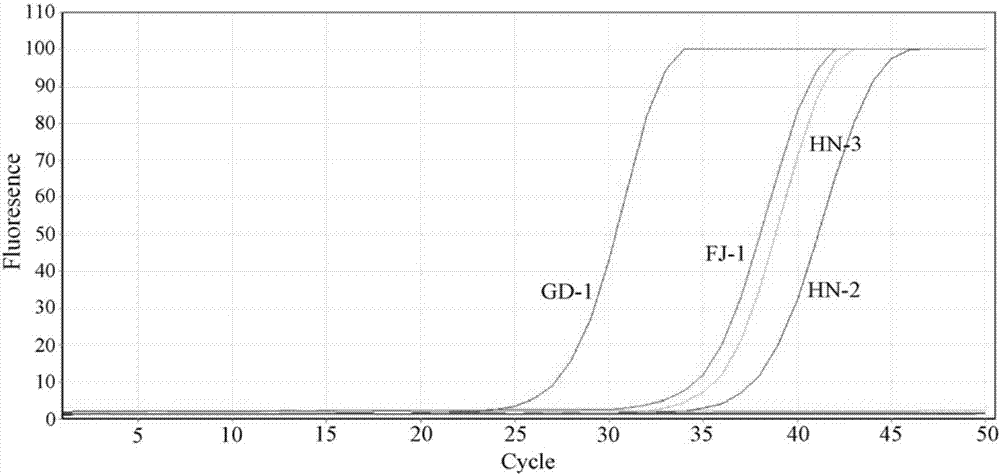Detection and application of prawn enterocytozoon hepatopenaei trehalose-6-phosphate synthase gene
A technology of phosphate synthase and hepatic enterocystosis, which is applied in application, genetic engineering, glycosyltransferase, etc., can solve the problems of inability to conduct quantitative research, insufficient sensitivity and specificity, etc.
- Summary
- Abstract
- Description
- Claims
- Application Information
AI Technical Summary
Problems solved by technology
Method used
Image
Examples
Embodiment Construction
[0035] Below in conjunction with specific embodiment, further illustrate the present invention. It should be understood that these examples are only used to illustrate the present invention and are not intended to limit the scope of the present invention. For the experimental methods that do not indicate the specific conditions in the following examples, usually follow the routine conditions such as the Molecular Cloning Laboratory Manual [7] (Sam Brook, Russell (author), Huang Peitang (translation), "Molecular Cloning Experiment Guide", Science Press, 2002, third edition.) The experimental conditions described in, or according to the reagent or instrument manufacturer suggested conditions.
[0036] Concrete steps of the present invention are:
[0037] 1. Extraction of total RNA from shrimp infected with Enterocystis hepatica
[0038] Take 100mg of prawn hepatopancreas tissue, add 0.6mL TRI Reagent (Molecular Research Center Company), grind the sample with a grinding rod, a...
PUM
 Login to View More
Login to View More Abstract
Description
Claims
Application Information
 Login to View More
Login to View More - R&D Engineer
- R&D Manager
- IP Professional
- Industry Leading Data Capabilities
- Powerful AI technology
- Patent DNA Extraction
Browse by: Latest US Patents, China's latest patents, Technical Efficacy Thesaurus, Application Domain, Technology Topic, Popular Technical Reports.
© 2024 PatSnap. All rights reserved.Legal|Privacy policy|Modern Slavery Act Transparency Statement|Sitemap|About US| Contact US: help@patsnap.com










